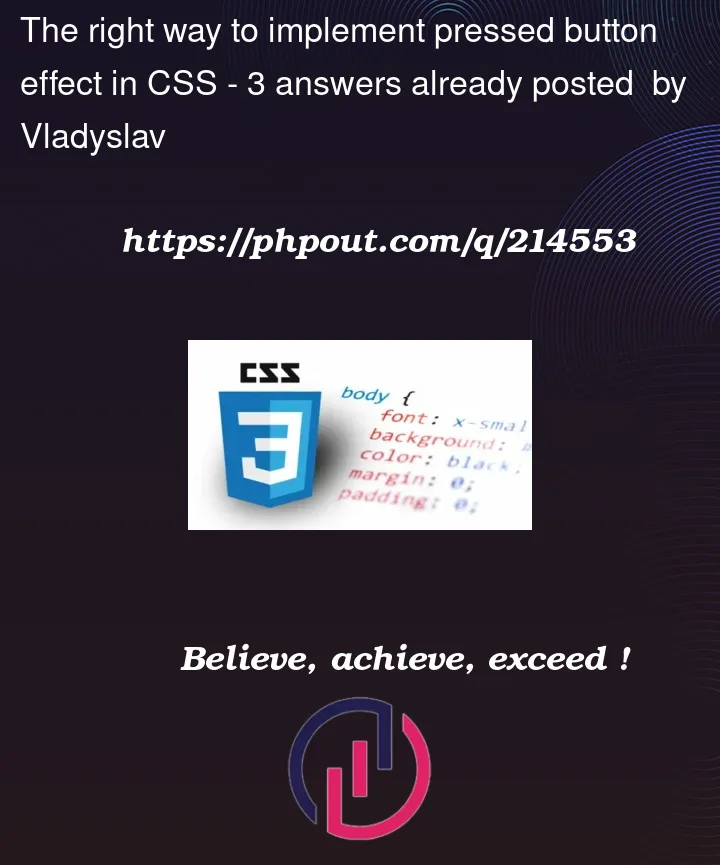I am creating piano layout using CSS.
I really like this "button-pressed" effect, but it shifts elements around it. How does one avoid it?
<main>
<div id="o-2" class="octave">
<button id="C2" class="C key"></button>
<button id="C2-sharp" class="C-sharp key-black"></button>
<button id="D2" class="D key"></button>
<button id="D2-sharp" class="D-sharp key-black"></button>
<button id="E2" class="E key"></button>
</div>
</main>
main {
width: 100%;
height: 100vh;
display: flex;
justify-content: center;
align-items: center;
}
.octave {
display: grid;
grid-template-rows: 25% 25% 25% 25%;
grid-template-columns: repeat(14, auto);
}
button {
border: 1px solid black;
margin: 1px;
box-shadow: 5px 5px 5px black;
cursor: pointer;
}
button:active {
margin-left: 4px;
margin-top: 4px;
box-shadow: 1px 1px 5px black;
}
Positioning of keys are implemented using grid.
Thanks!




3
Answers
You can use the
transformproperty instead of adjusting themarginin the :activepseudo-class. Thetransformproperty allows you to scale the button slightly and move it down when it is pressed, without affecting the layout of surrounding elements.You can change the button element type. I share it below.
you can try this code: